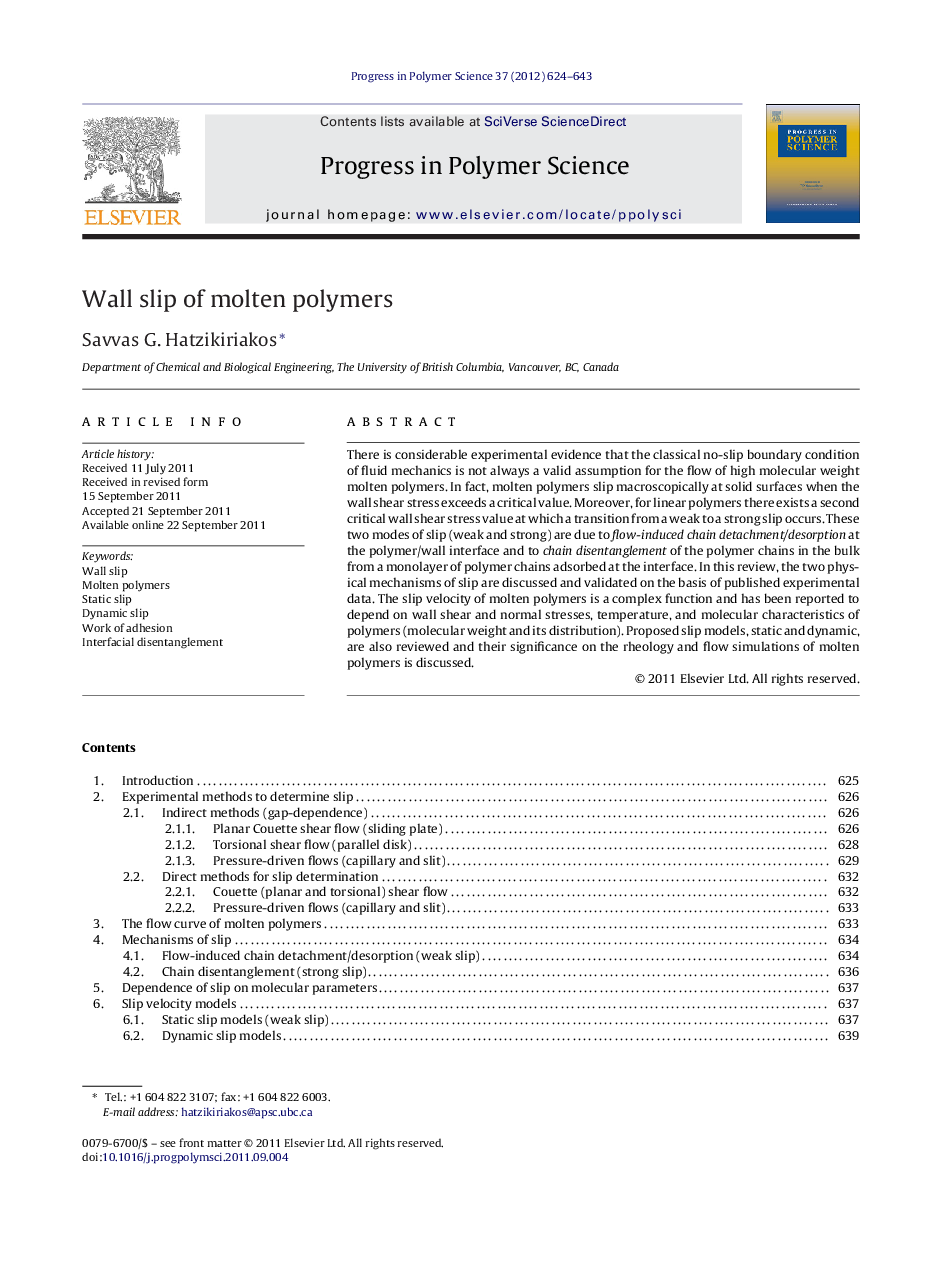| Article ID | Journal | Published Year | Pages | File Type |
|---|---|---|---|---|
| 5208616 | Progress in Polymer Science | 2012 | 20 Pages |
There is considerable experimental evidence that the classical no-slip boundary condition of fluid mechanics is not always a valid assumption for the flow of high molecular weight molten polymers. In fact, molten polymers slip macroscopically at solid surfaces when the wall shear stress exceeds a critical value. Moreover, for linear polymers there exists a second critical wall shear stress value at which a transition from a weak to a strong slip occurs. These two modes of slip (weak and strong) are due to flow-induced chain detachment/desorption at the polymer/wall interface and to chain disentanglement of the polymer chains in the bulk from a monolayer of polymer chains adsorbed at the interface. In this review, the two physical mechanisms of slip are discussed and validated on the basis of published experimental data. The slip velocity of molten polymers is a complex function and has been reported to depend on wall shear and normal stresses, temperature, and molecular characteristics of polymers (molecular weight and its distribution). Proposed slip models, static and dynamic, are also reviewed and their significance on the rheology and flow simulations of molten polymers is discussed.
